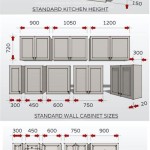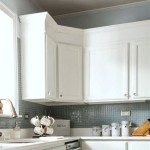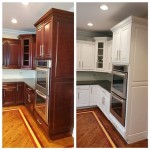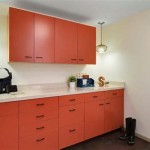Kitchen Cupboard Carcass Sizes: A Guide to Understanding the Building Blocks of Your Kitchen
Kitchen cabinets are a vital element of any kitchen, providing storage and organization while contributing to the overall aesthetic. But before you start designing your dream kitchen, it's essential to understand the fundamental structure of cabinets: the carcass. This article will delve into the world of kitchen cupboard carcass sizes, exploring the key factors that influence their dimensions and the considerations to keep in mind during your kitchen planning.
Understanding Kitchen Cupboard Carcasses
A kitchen cupboard carcass is the basic box-like structure that forms the foundation of your cabinets. It's the framework that holds the doors, drawers, shelves, and other interior components. The carcass size is crucial because it directly affects the overall storage capacity and the layout of your kitchen.
Carcasses are typically constructed from various materials like plywood, MDF (medium-density fiberboard), or melamine-coated chipboard. The material choice influences factors like durability, moisture resistance, and price. Each carcass is built with a frame made of sides, top, bottom, and back panels. The size of the frame dictates the overall dimensions of the cabinet.
Standard Carcass Sizes: A Framework for Your Kitchen
Kitchen manufacturers often adhere to standard carcass sizes to ensure compatibility and ease of assembly. However, it's important to note that these standards are guidelines, not rigid rules. Customized carcasses are available if your kitchen's layout demands unique dimensions.
Here are some common standard carcass sizes:
- Base Cabinets: Base cabinets, which are typically located on the floor, often have a standard height of 34.5 inches (87.6 cm) and a depth of 24 inches (61 cm). The width can vary depending on the cabinet's purpose and design, with common options including 12 inches (30.5 cm), 18 inches (45.7 cm), 24 inches (61 cm), and 30 inches (76.2 cm).
- Wall Cabinets: Wall cabinets are mounted above the countertop and have a standard depth of 12 inches (30.5 cm). Their height can be adjusted based on your needs, with common options ranging from 30 inches (76.2 cm) to 36 inches (91.4 cm). The width options for wall cabinets mirror those of base cabinets.
- Tall Cabinets: Tall cabinets, as the name suggests, are designed for maximizing vertical storage space. They typically have a standard depth of 24 inches (61 cm) and a height ranging from 84 inches (213.4 cm) to 90 inches (228.6 cm). The width options for tall cabinets usually range from 15 inches (38.1 cm) to 30 inches (76.2 cm).
Factors Influencing Carcass Size Selection
Choosing the right carcass size for your kitchen is crucial for functionality and aesthetics. Here are several factors to consider:
1. Kitchen Layout and Space Available:
Measure the available space in your kitchen carefully. Consider the layout of your appliances, windows, and other fixtures. Account for aisle widths and ensure that there's enough room to easily maneuver around the cabinets.
2. Desired Storage Capacity:
The size of the carcass directly influences the amount of storage you have. Larger carcasses provide more storage space but may require more space in your kitchen overall. Evaluate your storage needs and choose sizes that accommodate your requirements.
3. Appliance Dimensions:
If you're planning to integrate appliances like ovens, dishwashers, or microwaves within your cabinetry, ensure that the chosen carcass sizes are compatible with the appliance dimensions.
4. Countertop and Backsplash Considerations:
The height of your base cabinets, and therefore their carcasses, should be compatible with your chosen countertop height. Additionally, consider the height and design of your backsplash, ensuring that the wall cabinets' size and positioning are suitable for the backsplash design.
5. Personal Preferences and Lifestyle:
Ultimately, your personal preferences play a role in deciding the carcass sizes. Consider your cooking habits, storage needs, and the overall aesthetic you want to achieve in your kitchen.
Kitchen cupboard carcass sizes are a fundamental aspect of kitchen design, playing a significant role in functionality, storage, and aesthetics. By understanding the standard sizes and considering the factors that influence their selection, you'll be well-equipped to plan your kitchen effectively and create a space that's both beautiful and practical for your needs.

N Standard Kitchen Dimensions Renomart

Kitchen Unit Door Combinations

Fitted Kitchens Direct An Independent Kitchen Supplier For Your Budget Or Bespoke Either Supply And Fit Only

Kitchen Cupboard Carcasses Buy Ultimate Creations

1200mm Double Highline Base Units

Kitchen Cabinet Dimensions Base Cabinets Frameless

N Standard Kitchen Dimensions Renomart

N Standard Kitchen Dimensions Renomart

Kitchen Cabinets Design Materials Smith

Kitchen Base Cabinets 101 Ana White
Related Posts








